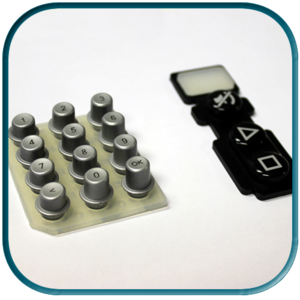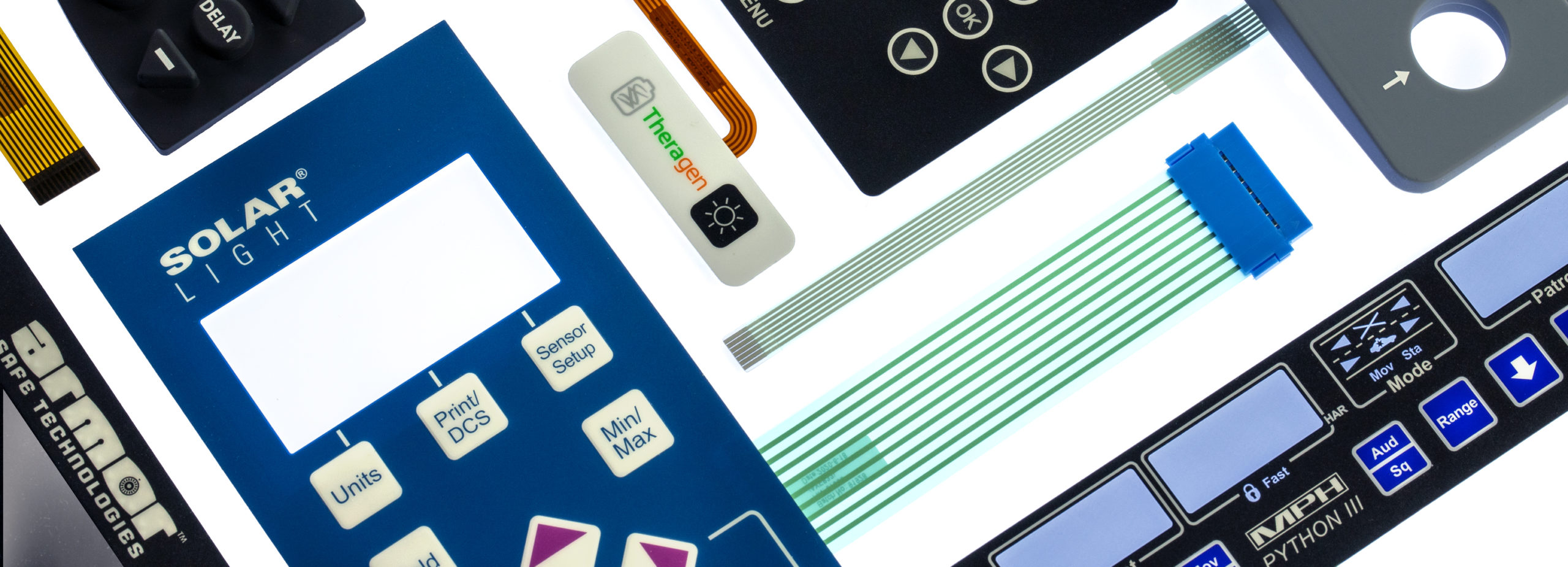The Ultimate Resource on Membrane Layer Changes: Style, Performance, and Applications
Membrane changes function as an interesting junction of style and functionality, playing a crucial function in modern individual interfaces across different fields. This resource unboxes the vital parts that add to their effectiveness, including graphic overlays and circuit traces, while additionally elucidating the systems behind their stress activation. As we discover the diverse applications of membrane switches, it becomes apparent that their adaptability and toughness are critical in settings varying from medical care to consumer electronics. Nonetheless, the nuances of their layout and functional concepts might expose also much deeper understandings worth considering.

Comprehending Membrane Buttons
Membrane layer buttons are a type of user interface innovation widely made use of in different electronic gadgets, identified by their thin, versatile design and functionality. These buttons include several layers that consist of graphic overlays, glue layers, and circuitry, enabling a portable and reliable user interface for users. They can be located in appliances, clinical devices, and commercial control board, giving a reliable technique for user interaction.
Among the primary benefits of membrane layer switches is their capacity to withstand contaminants such as dust and wetness, making them suitable for atmospheres where resilience is crucial. Their inconspicuous layout enables for seamless combination into different applications, while the customizable visuals overlays enhance user experience by offering clear visual comments. Furthermore, membrane layer switches can accommodate a range of innovations, such as tactile responses and backlighting, additional improving their use.
The production procedure for membrane layer changes generally involves screen die-cutting, lamination, and printing methods, making sure accuracy and consistency in production. Generally, membrane layer switches over represent a versatile and reliable solution for contemporary electronic gadgets, incorporating functionality with visual charm in customer interface style.
Key Elements and Style Elements
A range of vital components and design elements come together to develop an efficient membrane layer button. At the core, the graphic overlay offers both visual and practical purposes, supplying a straightforward interface while shielding internal components from ecological elements. The option of materials, normally polyester or polycarbonate, affects sturdiness and tactile comments.
Beneath the overlay, the adhesive layer makes certain the button sticks safely to the substratum, which can be glass, plastic, or metal. The spacer layer is important, as it preserves the needed void in between the circuit and the overlay layers, permitting efficient actuation. Membrane Switches. Circuit traces, generally made from conductive ink or adhesive, are printed on a flexible substrate, making it possible for electrical signals to be transmitted when stress is applied
Layout factors to consider additionally include the plan of responsive domes or embossing that give physical feedback to the customer, boosting the total experience. Furthermore, the format and spacing of the switches have to be maximized for simplicity of usage, guaranteeing that individuals can navigate the user interface intuitively. Generally, these elements and layout aspects work synergistically to produce a reliable, practical membrane layer switch tailored to details applications.
Functionality and Procedure Mechanism
At the heart of reliable capability go to the website for membrane layer changes lies their functional system, which assists in customer communication with an easy yet reliable layout. These buttons operate the principle of pressure activation, where a customer uses pressure to a marked location of the button (Membrane Switches). This activity presses the layers of the switch, finishing an electric circuit that sends out a signal to the connected tool
The building typically includes a leading visuals layer, an adhesive spacer layer, and a lower circuit layer, which jointly create a robust interface. When stress is applied, the leading layer falls down against the lower circuit layer, permitting conductive traces to connect. This design not only enables clear tactile comments however additionally makes sure toughness and integrity, as the buttons are often immune to dust and moisture.
Furthermore, the adaptability of membrane changes enables combination with various modern technologies, consisting of LED indicators and microcontrollers, improving their performance. By providing a streamlined interface that decreases mechanical wear, membrane layer changes continue to be a favored choice in applications ranging from consumer electronic devices to industrial tools, ensuring ideal efficiency and individual satisfaction across diverse environments.
Kinds of Membrane Buttons

One more substantial classification is lit up membrane layer switches, which include backlighting to improve exposure in low-light conditions. These switches are usually used in control panels and dashboards where clear visibility is crucial.
Furthermore, there are custom-made membrane switches made to fulfill Click This Link details dimensional, visual, and useful needs. These customizations can consist of special shapes, shades, and formats, enabling smooth combination right into various gadgets.

Applications Throughout Different Industries
Exactly how do membrane buttons boost performance throughout varied markets? In the clinical field, membrane layer switches play an important duty in devices such as diagnostic tools and individual tracking systems, where integrity and simplicity of cleaning are extremely important.
In the automobile sector, membrane layer buttons are generally used in control panels and control panels, providing instinctive controls that enhance vehicle driver safety and security and comfort. The customer electronic devices market additionally takes advantage have a peek at this site of their light-weight and customizable features, allowing smooth layouts for smartphones and home appliances.
Moreover, membrane layer switches locate applications in commercial automation, where they add to effective equipment operation and tracking systems. Their resistance to dust and moisture makes sure performance in demanding conditions (Membrane Switches). Additionally, the food and drink sector uses membrane layer buttons for devices control, where hygiene and durability are critical
Conclusion
Finally, membrane layer switches over represent a critical technology in interface technology, identified by their distinct style and capability. Their key components, including visuals overlays and circuit traces, add to their functional efficiency with stress activation. The versatility of membrane changes facilitates their application across diverse industries, from clinical tools to consumer electronic devices. This comprehensive understanding reinforces the value of membrane layer switches in enhancing item use and durability in contemporary technological settings.
Membrane layer switches offer as a fascinating crossway of design and capability, playing an essential duty in contemporary customer interfaces throughout different markets.Membrane layer switches are a kind of customer interface modern technology widely utilized in different electronic devices, identified by their thin, adaptable style and capability.At the heart of reliable performance for membrane changes exists their operational mechanism, which facilitates customer interaction with a simple yet efficient design. These switches run on the principle of pressure activation, where an individual applies force to a designated area of the button.In final thought, membrane switches over stand for an essential development in customer interface innovation, defined by their distinct style and performance.